Graffiti refers to a modern form of street art that originated in the 30th century BC in Rome and Greece. The word itself comes from the Italian "graffito" and means "scrawled". That is, graffiti are images scrawled on some surface. Graffiti is often viewed as an act of vandalism. However, it is necessary to distinguish "fast" images from real street art. Modern artists - graffiti artists use spray cans with special paint in their work, but different styles also involve different types of paint and different tools for creating a picture (rollers, thin and thick brushes, sponges, etc.) Most often they paint on the walls of buildings or tall uniform 3D image fences. In recent years, graffiti on vehicles has been common.
Drawing graffiti is not as easy as it seems at first glance. Before picking up a spray can, you need to train long enough on paper to display a high-quality professional drawing on the wall. Try to create your first masterpiece on paper using a simple pencil. A distinctive feature of graffiti is freedom of expression. Only the use of creativity and a lot of imagination can make an ordinary graffiti artist a real street artist and a professional in his field.
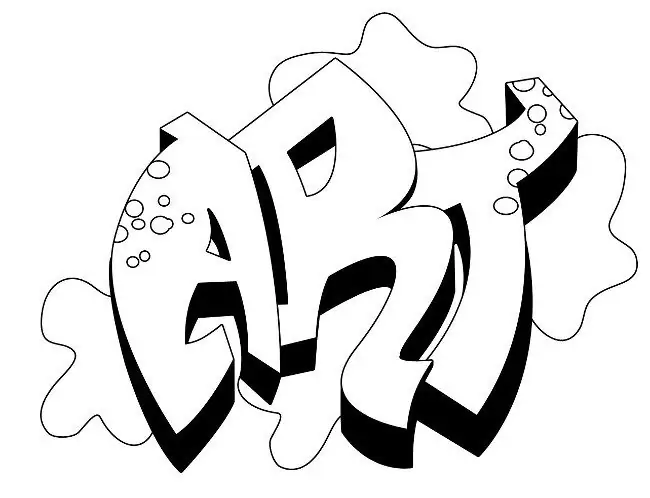
It is necessary
pencil, paper, soft eraser
Instructions
Step 1
Check out graffiti styles to get started. The most popular style is “bubble latter” or “bubble style”, in which large letters have a rounded shape, almost no sharp corners are used. The "blockbuster" style is a three-dimensional image performed by a group of graffiti artists, which often colors over other information (most often these are huge letters made in one or two colors). When using "WildStyle" (wild style), the letters resemble abstraction, since the intended inscription is practically unreadable and looks more like an intricate pigtail. Old school style - drawings in the style of the 80s and 90s, the style is perceived as a tribute to the old school. The "Brush and paint" style implies the use of a brush and a roller, not spray paint cans, to create graffiti. In the style of "Hardcore" they paint acidic, dirty, partly vandal images. Using a thick brush, create graffiti in the style of "Fat cap" (a distinctive feature - very wide lines). With the "Sharp style" it seems that the drawing can be pricked or cut (very sharp lines and creases, intricate weaves are used) There are also landscape, children's graffiti, images in the style of "realism", stencil, cartoon graffiti.
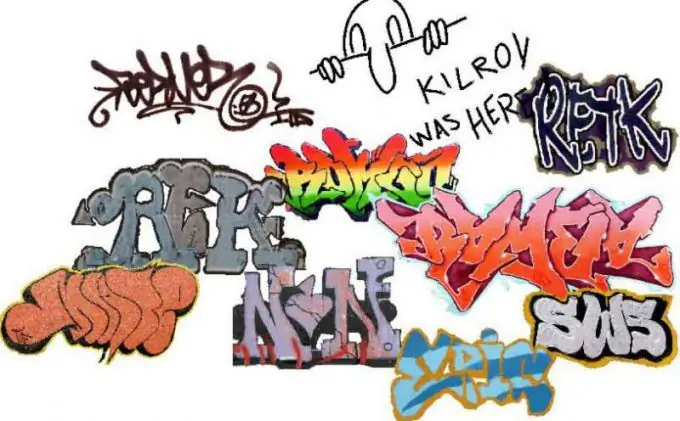
Step 2
Most often, novice graffiti artists depict their name or pseudonym (nickname), tag (author's signature). In the future, the tag is used as a caption to the main figure. The tag should be memorable and bright. It is a reflection of the artist's personality, his creativity and style, his face. For your first tagging experience, it is best to use a bubble style font. In the future, it will be possible to experiment with the font, even to develop your own author's one. Practice drawing in graffiti style individual letters of the Russian and English alphabets, only then proceed to combining them into words and whole inscriptions.
Step 3
Take a regular sheet of A4 white paper (if you don't have such a sheet at hand, then a checkered notebook sheet will do), a simple pencil and a soft eraser. Use light strokes to outline the contours of the future graffiti. Not letters, but the borders in which the image will be located. Try to depict it in the center of the sheet. Next, start writing letters in the selected area without pressing. Please note that the peculiarity of street graffiti art is that one letter should flow smoothly into another. Draw each letter if you want to be a good graffiti artist. Sometimes it can take hours to create a sketch, but the result will be worth it. Graffiti art is not for those who want quick results. In the future, the tag will appear very quickly - a few strokes will be enough. Correct the lines that didn't come out very well. Then circle the resulting sketch with great pressure.
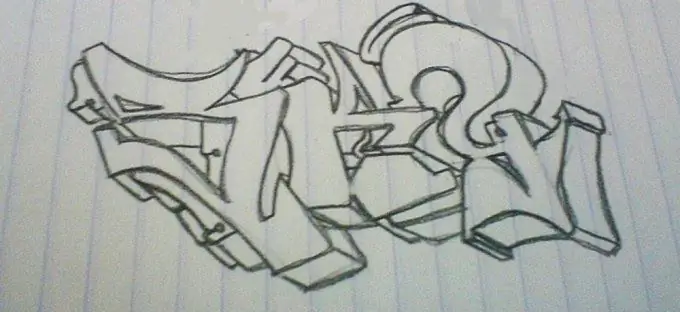
Step 4
Since graffiti usually has a 3D effect, outline each letter. It should look like each letter has at least two layers. At this stage, you can add details that distinguish graffiti from a simple drawing: intricate patterns and weaves, visual smudges, bubbles, which can be both outside and inside the letters. At the first stage, these elements can be peeped from more experienced graffiti artists. Remember, the art of graffiti cannot be learned from textbooks. Mastery in this case comes exclusively with experience.
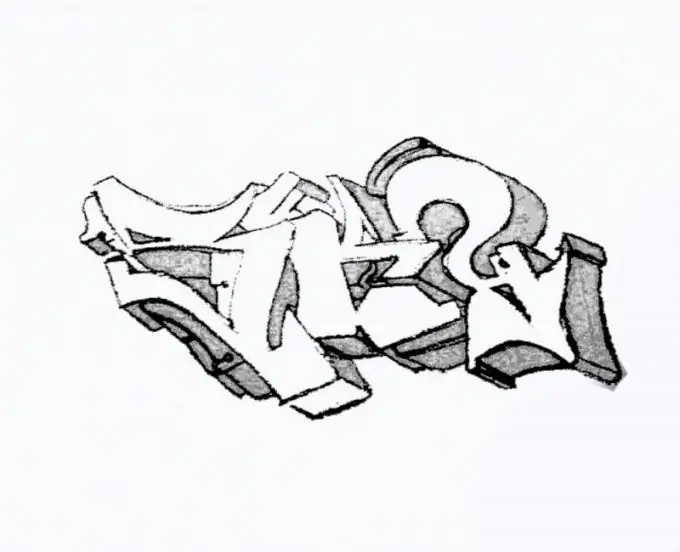
Step 5
Now you can move on to painting the graffiti. Take your time using markers. In the first steps, master the pencil technique well. The volume of letters can be easily emphasized with the correct placement of accents. The direction of the light plays a big role in this. It is necessary to choose the darkest and lightest place in the picture. Letter thickness is most often created by shading. To the edge of the letters, it is necessary to lighten the tone, and to thicken the edges. Then the graffiti will turn out to be very expressive and individual. It remains only to arrange the necessary highlights to "revive" the picture. When the graffiti is finished, use a soft eraser to erase the outlines where you wrote the drawing.
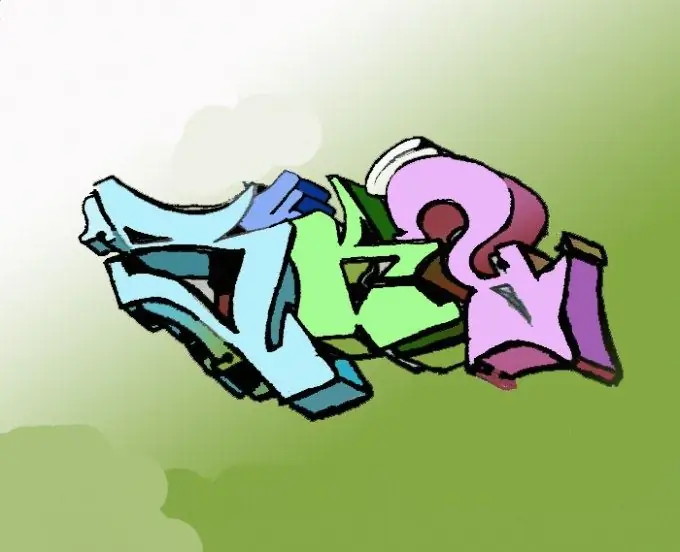
Step 6
In the future, it will be possible to use tinted paper, which will shade the graffiti and show it in a favorable light.






